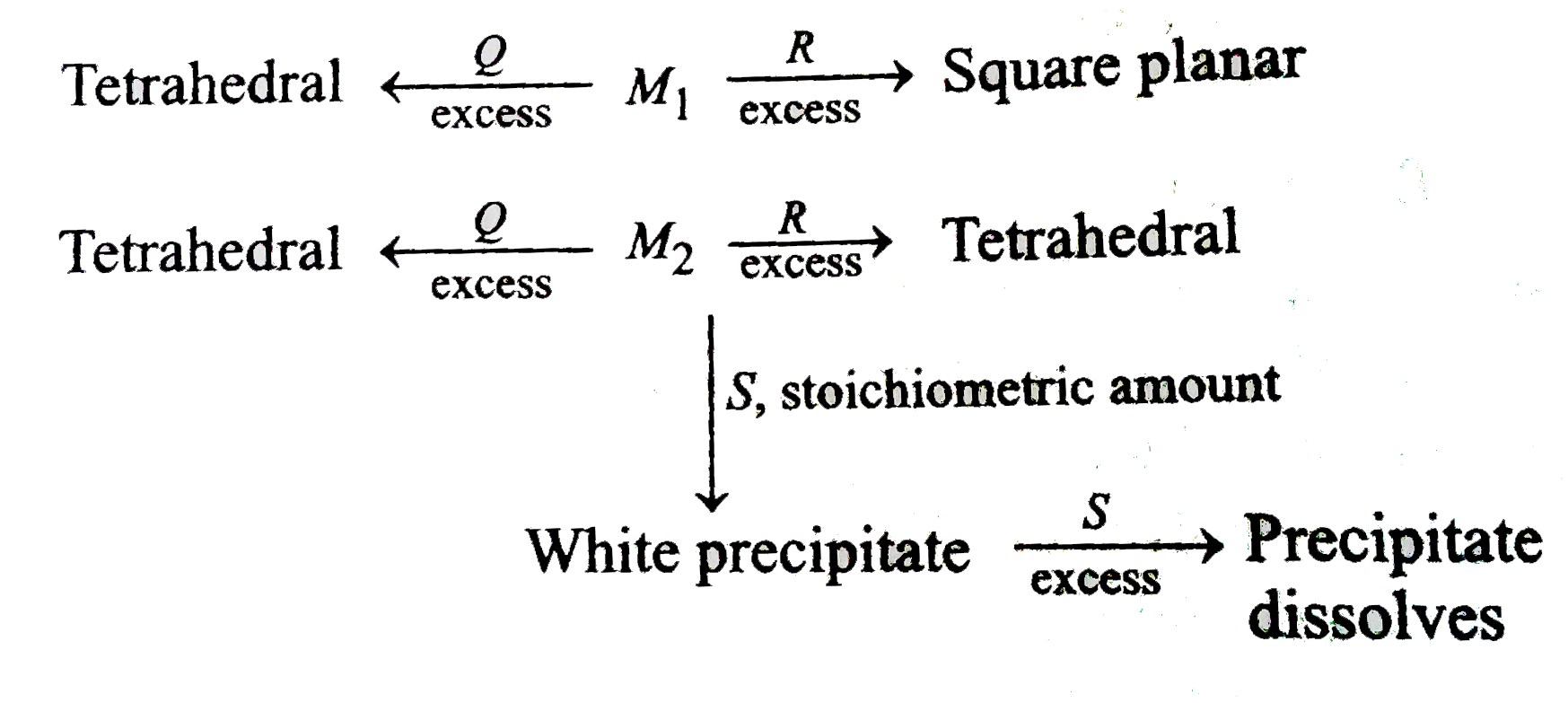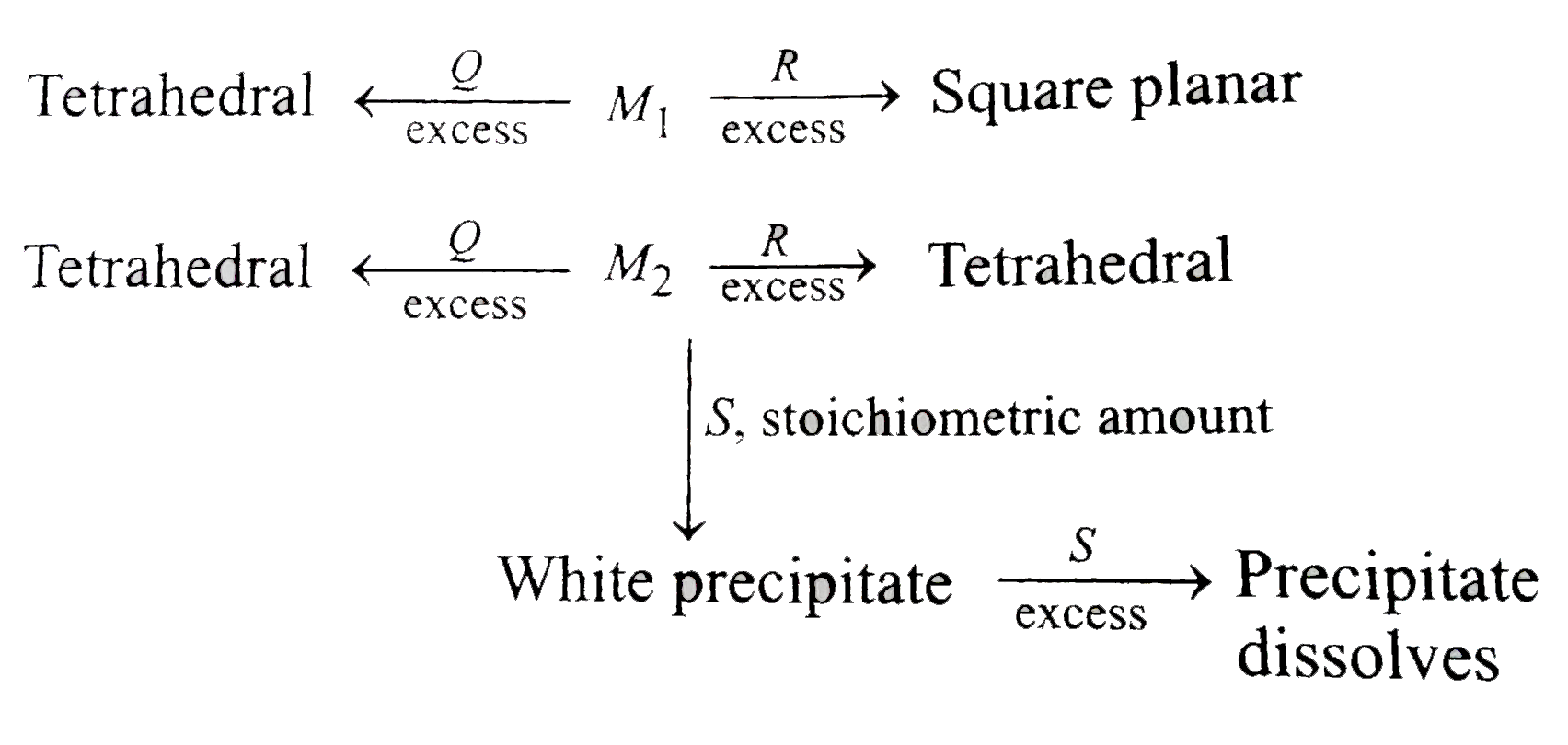Complete Solutions to Passage Based Questions of chapter QUALITATIVE ANALYSIS of Class 12 book with complete answers and questions
| Class 12 | CHEMISTRY |
| Chapter | QUALITATIVE ANALYSIS |
| IIT-JEE PREVIOUS YEAR | Passage Based Questions |
| Number Of Questions | 6 |
| Academic Year | 2023-24 |
An aqueous solution of metal ion `M_(1)` reacts separately with reagents Q and R in excess to gie tetrahedral and sqaure planar complexes, respectively. An aqueous solution of another metal ion `M_(2)` always forms tetrahedral complexes with these reagents. Aqueous solution of `M_(2)` on reaction with reagent S gives white precipitate which dissolves in excess of S. The reaction are summarised in the scheme given below
Scheme

`M_(1), Q` and R, respectively are
View SolutionAn aqueous solution of metal ion `M_(1)` reacts separately with reagents Q and R in excess to gie tetrahedral and sqaure planar complexes, respectively. An aqueous solution of another metal ion `M_(2)` always forms tetrahedral complexes with these reagents. Aqueous solution of `M_(2)` on reaction with reagent S gives white precipitate which dissolves in excess of S. The reaction are summarised in the scheme given below
Scheme

Reagent S is
View SolutionWhen a metal rod M is dipped into an aqueous colourless concentrated solution of compound N, the solution turns light blue. Addition of aqueous `NaCl` to the blue solution gives a white precipitate O. Addition of aqueous `NH_(3)` dissolves O and gives an intense blue solution.
The final solution contains
View Solutionp-amino-N, N-dimethyl laniline is added to a strongly acidci solution of x. The resulting solution is treated with a few drops of aqueous solution of Y to yield blue colouration due to the formation of methylene, blue. Treatment of the aqueous solution of Y with the reagent potassium hexaxyanoferrate (II) leads to the formation of an intense blue precipitate. The precipitate of the solution of Y with the solution of potassium hexacyanoferrate (III) leads to a brown colouration due to the formation of Z.
The compound X, is
View Solutionp-amino-N, N-dimethyl laniline is added to a strongly acidci solution of x. The resulting solution is treated with a few drops of aqueous solution of Y to yield blue colouration due to the formation of methylene, blue. Treatment of the aqueous solution of Y with the reagent potassium hexaxyanoferrate (II) leads to the formation of an intense blue precipitate. The precipitate of the solution of Y with the solution of potassium hexacyanoferrate (III) leads to a brown colouration due to the formation of Z.
The compound Y, is
View Solutionp-amino-N, N-dimethyl laniline is added to a strongly acidci solution of x. The resulting solution is treated with a few drops of aqueous solution of Y to yield blue colouration due to the formation of methylene, blue. Treatment of the aqueous solution of Y with the reagent potassium hexaxyanoferrate (II) leads to the formation of an intense blue precipitate. The precipitate of the solution of Y with the solution of potassium hexacyanoferrate (III) leads to a brown colouration due to the formation of Z.
View Solution
Passage Based Questions questions and complete solutions for chapter QUALITATIVE ANALYSIS of IIT-JEE PREVIOUS YEAR (CHEMISTRY) of Class 12